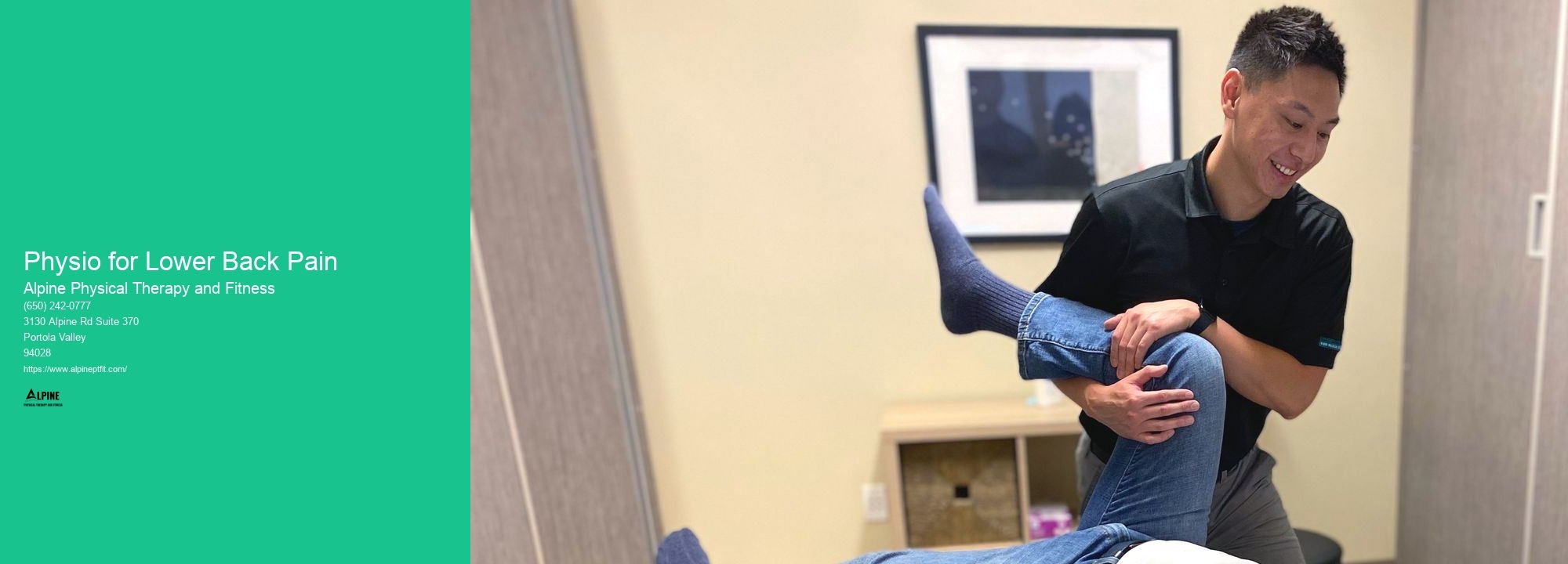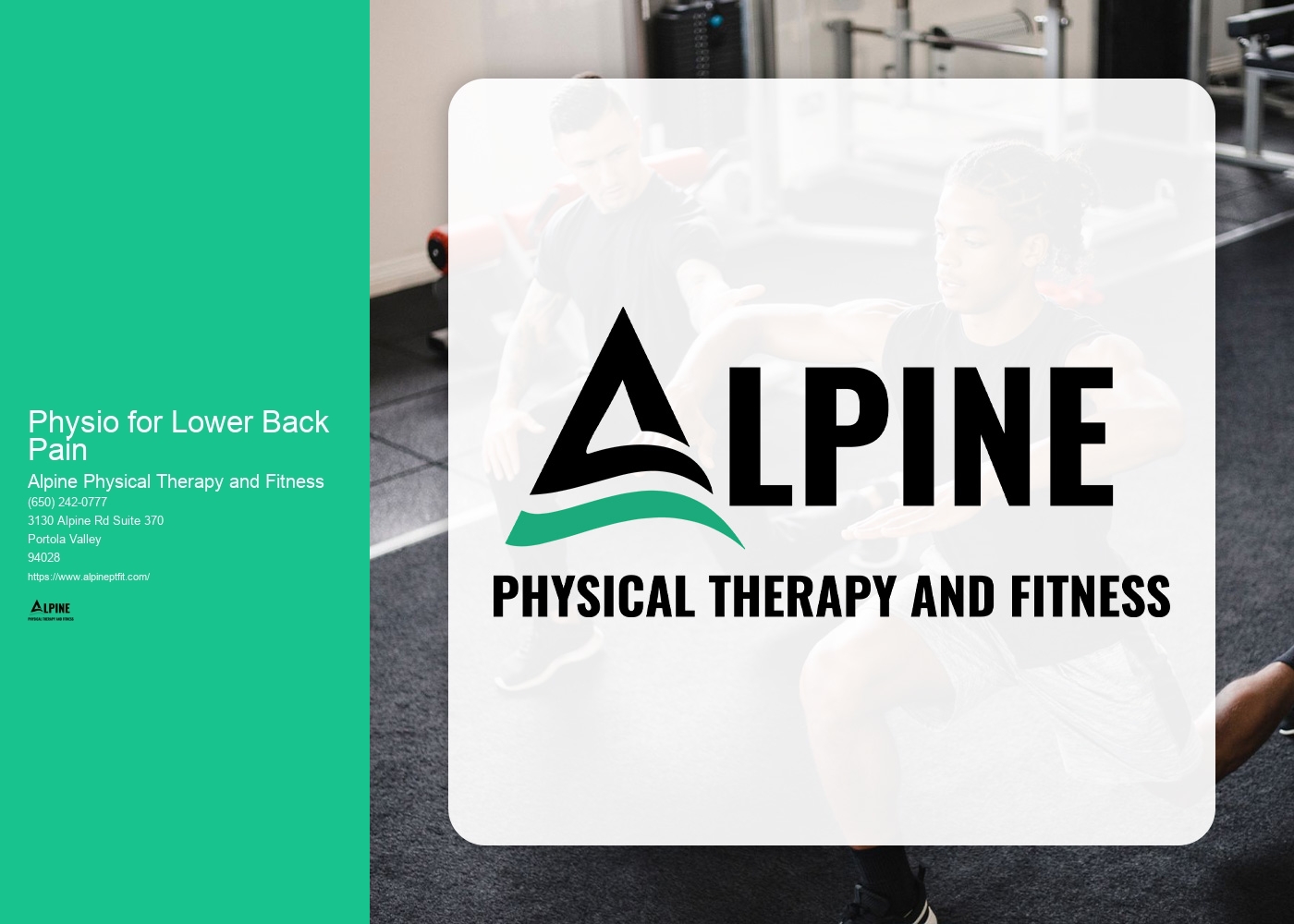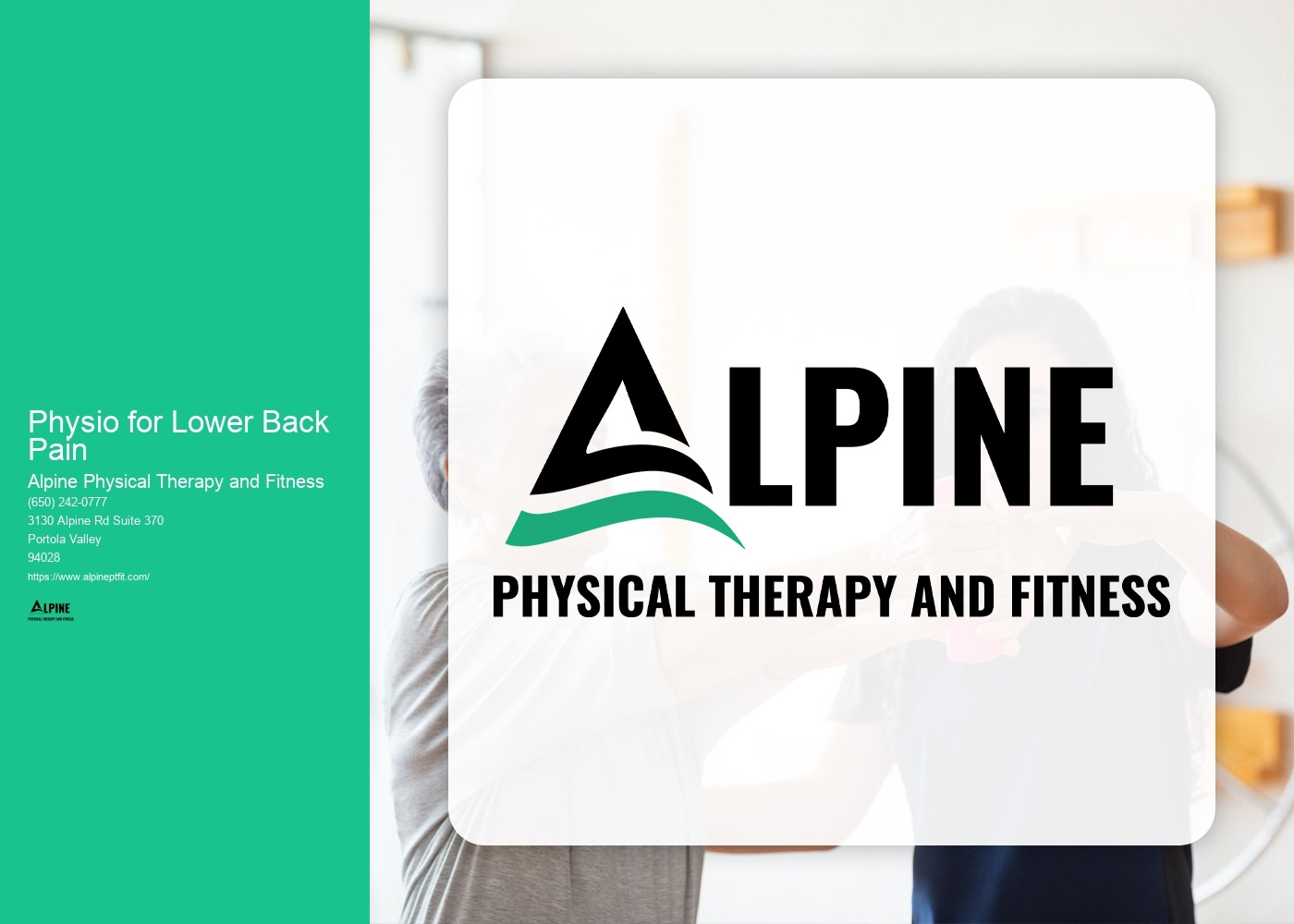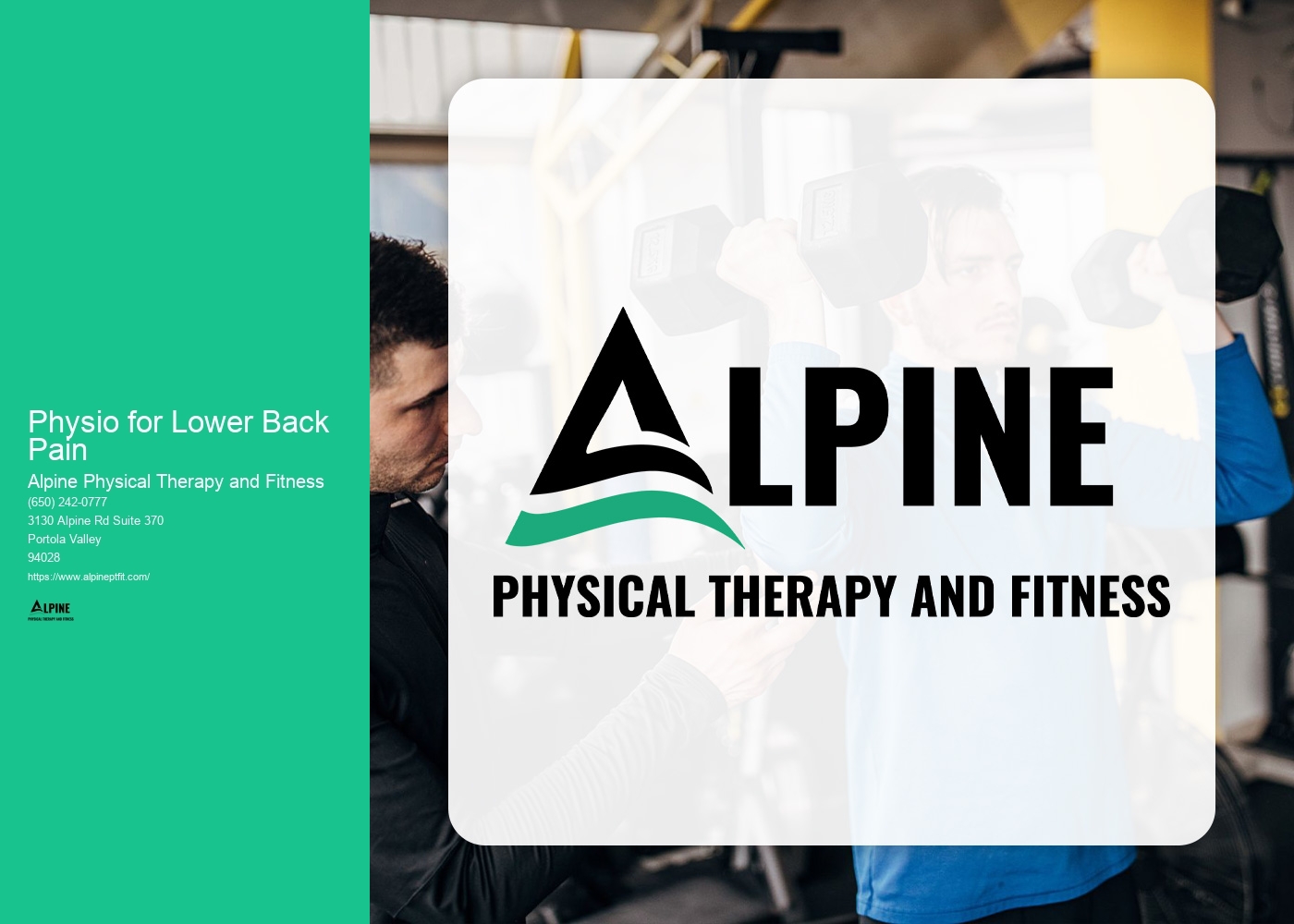

Lower back pain can have various causes, but the most common ones include muscle strains or sprains, herniated discs, degenerative disc disease, spinal stenosis, and poor posture. Muscle strains or sprains often occur due to sudden movements, lifting heavy objects, or overuse of the muscles. Herniated discs happen when the soft inner material of a disc pushes through the outer layer, irritating nearby nerves. Degenerative disc disease is a condition where the discs between the vertebrae break down over time. Spinal stenosis is the narrowing of the spinal canal, which can put pressure on the nerves. Poor posture, such as slouching or sitting for long periods, can also contribute to lower back pain.
Physiotherapy can be highly effective in treating lower back pain. A physiotherapist will assess the individual's condition and develop a personalized treatment plan. This may include a combination of manual therapy techniques, such as joint mobilization or soft tissue massage, to reduce pain and improve mobility. They may also prescribe specific exercises to strengthen the core muscles and improve posture. Additionally, physiotherapists may use modalities like heat or cold therapy, ultrasound, or electrical stimulation to alleviate pain and promote healing. Education on proper body mechanics and ergonomics is also an essential part of physiotherapy for lower back pain.
There are several exercises that can be done at home to relieve lower back pain. One effective exercise is the pelvic tilt, where you lie on your back with knees bent and gently flatten your lower back against the floor. Another exercise is the bridge, where you lie on your back with knees bent, lift your hips off the floor, and hold for a few seconds before lowering back down. Additionally, gentle stretches like the knee-to-chest stretch, where you lie on your back and bring one knee towards your chest, can help relieve tension in the lower back. It's important to consult with a physiotherapist before starting any exercise program to ensure it is safe and appropriate for your specific condition.

There are specific stretches that can help with lower back pain. One effective stretch is the cat-camel stretch, where you get on your hands and knees, arch your back upwards like a cat, and then lower your back down like a camel. Another stretch is the child's pose, where you kneel on the floor, sit back on your heels, and reach your arms forward, lowering your chest towards the floor. The hamstring stretch, where you lie on your back and lift one leg up while keeping the knee straight, can also help relieve lower back pain. These stretches help to improve flexibility, reduce muscle tension, and promote better alignment of the spine.
The recovery time for lower back pain with physiotherapy can vary depending on the severity of the condition and individual factors. In general, with appropriate physiotherapy treatment, most people experience significant improvement within a few weeks to a few months. However, it's important to note that chronic or recurring lower back pain may require ongoing management and maintenance through regular physiotherapy sessions and home exercises. The physiotherapist will work closely with the individual to monitor progress and adjust the treatment plan as needed to ensure optimal recovery.

To prevent lower back pain from recurring, there are several lifestyle changes that can be beneficial. Maintaining good posture, both while sitting and standing, is crucial. It's important to avoid prolonged sitting or standing in one position and take regular breaks to stretch and move around. Engaging in regular exercise, particularly activities that strengthen the core muscles and improve flexibility, can also help prevent lower back pain. Maintaining a healthy weight, practicing stress management techniques, and using proper body mechanics when lifting or carrying heavy objects are additional lifestyle changes that can reduce the risk of lower back pain.
Physiotherapy can indeed help with chronic lower back pain. Chronic lower back pain is defined as pain that persists for more than three months. Physiotherapy aims to address the underlying causes of chronic pain and provide long-term relief. A physiotherapist will assess the individual's condition, identify any contributing factors, and develop a comprehensive treatment plan. This may include a combination of manual therapy techniques, exercises, and modalities to reduce pain, improve mobility, and enhance overall function. The physiotherapist will also provide education on self-management strategies and lifestyle modifications to help individuals better manage their chronic lower back pain and improve their quality of life.

Yes, there are specialized exercises designed specifically for individuals who are recovering from heart surgery. These exercises are tailored to meet the unique needs and limitations of patients who have undergone cardiac procedures. They focus on improving cardiovascular fitness, strengthening the heart muscle, and promoting overall physical well-being. Some examples of specialized exercises for heart surgery recovery include low-impact aerobic activities like walking or cycling, gentle stretching exercises, and resistance training with light weights or resistance bands. It is important for individuals to consult with their healthcare provider or a cardiac rehabilitation specialist to develop a personalized exercise plan that takes into account their specific condition and recovery progress.
Hydrotherapy for wound care involves the use of specific techniques to promote healing and prevent infection. One technique is whirlpool therapy, which utilizes a whirlpool bath to cleanse the wound and remove debris. This technique helps to increase blood flow to the wound, which can aid in the delivery of oxygen and nutrients necessary for healing. Another technique is the use of moist dressings, which can be applied to the wound and then covered with a waterproof dressing. This helps to create a moist environment that promotes wound healing and prevents the formation of scabs. Additionally, hydrotherapy may involve the use of water jets or sprays to gently cleanse the wound and remove bacteria. These techniques, when used in conjunction with proper wound care practices, can help to facilitate the healing process and improve outcomes for patients.
Strain-counterstrain is a technique used in manual therapy that aims to alleviate pain and restore proper function by reducing muscle tension and improving joint mobility. This approach involves the gentle positioning of the body in a position of comfort, which is opposite to the direction of the strain or dysfunction. By holding this position for a short period of time, the therapist allows the muscles and tissues to relax, reducing the strain and promoting healing. Strain-counterstrain is particularly effective in treating musculoskeletal conditions such as muscle spasms, joint restrictions, and postural imbalances. It is often used in conjunction with other manual therapy techniques to provide comprehensive and individualized care to patients.
Core strengthening plays a significant role in women's health physical therapy due to its numerous benefits for overall well-being. The core muscles, including the abdominals, back muscles, and pelvic floor, provide stability and support to the spine and pelvis. By targeting these muscles through specific exercises, women can improve their posture, balance, and overall body mechanics. Additionally, a strong core can help alleviate back pain, improve pelvic floor function, and enhance athletic performance. In women's health physical therapy, core strengthening exercises are often incorporated to address conditions such as diastasis recti, pelvic organ prolapse, and urinary incontinence. By focusing on strengthening the core, women can improve their quality of life and regain control over their bodies.
Physical therapy can play a crucial role in the recovery of a soccer player with a hamstring strain. The therapist will design a personalized treatment plan that focuses on reducing pain, promoting healing, and restoring function. This may include a combination of manual therapy techniques, such as soft tissue mobilization and joint mobilization, to improve flexibility and range of motion. Additionally, therapeutic exercises will be prescribed to strengthen the hamstring muscles and surrounding muscles, improving stability and preventing future injuries. The therapist may also incorporate modalities like heat or ice therapy, electrical stimulation, and ultrasound to further aid in pain relief and tissue healing. Through regular physical therapy sessions, the soccer player can expect to regain strength, flexibility, and endurance, allowing them to return to the field safely and confidently.
Physical therapy plays a crucial role in the post-hip replacement rehabilitation process for seniors. It is a specialized form of rehabilitation that focuses on restoring mobility, strength, and function to the hip joint. Physical therapists use a variety of techniques and exercises to help seniors regain their independence and improve their quality of life. These may include range of motion exercises, strengthening exercises, balance training, gait training, and pain management techniques. The goal of physical therapy is to help seniors regain their ability to perform daily activities, such as walking, climbing stairs, and getting in and out of a chair, with minimal pain and discomfort. Additionally, physical therapy can help prevent complications such as muscle weakness, joint stiffness, and falls, which are common after hip replacement surgery. By working closely with physical therapists, seniors can achieve optimal outcomes and successfully return to their normal activities.